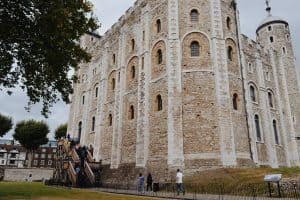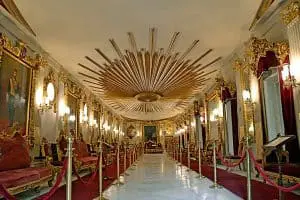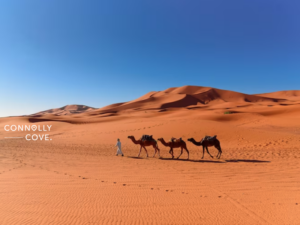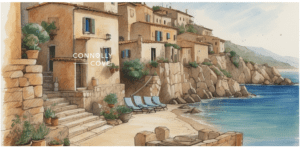Banshees and Other Irish Spirits: Unveiling Celtic Mysteries

Updated On: April 22, 2024 by Eman Sameh
Few figures among Irish spirits are as evocative and mysterious as the Banshee. Throughout Ireland’s history, tales of this wailing spirit have permeated the cultural consciousness, serving as a harbinger of death and a symbol of the enduring link between the Irish people and the ethereal realm. The banshee’s cry, an eerie keen that shatters the silence of the night, is said to foretell the passing of a family member, etching into Irish lore the power and presence of the supernatural.

Yet the banshee is but one of many spectral beings that roam the verdant hills and rugged coasts of Ireland. This land, shrouded in mysticism, is host to a plethora of spirits—each with their own storied origins and mythical significance. From the otherworldly Dullahan, who rides headless through the countryside, to the mischievous leprechauns guarding their elusive pots of gold, Irish mythology offers a rich lexicon of spiritual entities. Their manifestations are as varied as the landscapes they inhabit, and their tales speak to the profound sense of connection between the Irish people, their land, and the complex tapestry of belief that binds them to their ancestors.
Origins of Irish Spirits
Irish folklore brims with spirits and mythological figures that have their roots in ancient Celtic and Gaelic traditions, enriched by Norse and Norman influences.
Celtic and Gaelic Beginnings
We begin our exploration of Irish spirits with the ancient Celts, whose profound spirituality and belief in the supernatural laid the groundwork for Ireland’s rich tapestry of folklore. Spirits such as the banshee (or bean sídhe in Old Irish), which translates to ‘woman of the fairy mound’, originated in pre-Christian Ireland, where the natural world was replete with sacred essences. Our ancestors perceived the banshee as a harbinger of death, her mournful cry forewarning the demise of a family member.
The mythology of the Tuatha Dé Danann, a race of god-like figures, is another cornerstone of our Irish spiritual heritage. These mythological beings are reputed to have inhabited Ireland, governing it with their supernatural prowess before receding into the Earth, thus becoming the Aos Sí or ‘people of the mounds’, spirits intrinsically linked with the natural landscape of Ireland.
Influence of Norse and Norman
Our narrative would be incomplete without acknowledging the Norse and Norman settlers who, upon their arrival, interwove their own spiritual beliefs with the existing Celtic folklore. This amalgamation left an indelible mark on our Irish legends, introducing new elements and transforming the tapestry of our oral traditions. It is noteworthy that despite these external influences, entities like the banshee retained their distinctly Gaelic essence.
Mythological Figures and Legends
The figures populating our legends are as varied as the historical periods from which they stem. To delve into the Celtic lore is to encounter a realm where mortal heroes and mystical deities coexist, their stories passed down through generations and preserved in medieval manuscripts. These legends give us a window into the values and fears of our ancestors, with spirits like the banshee serving as a poignant connection between our world and the ethereal.
In our journey through Ireland’s spiritual origins, we recognise a heritage that is both complex and captivating. Each tale and each spirit, from the banshee to the majestic deities of old, weaves a part of our national identity, reminding us of the layers of history and belief that have shaped us into who we are today.
The Banshee: A Detailed Profile
In this section, we examine the Banshee, also known as ‘Bean Sidhe’, a compelling entity from Irish folklore, and explore its distinguishing features alongside the regional variations in its portrayal.
Defining Characteristics
The Banshee, traditionally viewed as a female spirit, is renowned for her role as an omen of death within Irish families. This spirit’s most iconic attribute is her piercing wail, a sound that resonates with the haunting beauty of the haunting caoine, or lament, signifying impending mortality. In her visage, she can appear as a beautiful young woman or an old woman, featuring the arresting contrast of red hair and a green dress. Intriguingly, the Banshee’s connection to the fairy realm is suggested by the term ‘fairy woman‘.
Variations Across Regions
Across the regions of Ireland, the depiction of the Banshee can differ markedly. Some locales may describe her as ethereally beautiful with a sorrowful expression, while others perceive her as haggard and frightful, which aligns with folklore where a banshee’s appearance can shift depending on the region. The notion of the beautiful banshee donning a green dress may be more prevalent in certain areas, suggesting a tie to the ancient Celtic symbolism of green as a colour of the otherworld. Contrastingly, in some tales, she is presented as an ordinary woman, connected to the families she visits with her mournful keening, thereby enriching the tapestry of her character across Irish storytelling.
Other Ethereal Irish Spirits
In our exploration of Irish folklore, we encounter a myriad of ethereal beings beyond the well-known banshee. These spirits form a vital part of the rich tapestry of myths that emanate from Ireland’s mystical lands.
The Aos Sí and Fairy Folk
The Aos Sí are considered the descendants of pre-Christian gods and nature spirits. They are often associated with ancient Neolithic monuments, which are believed to serve as gateways to their world. The Aos Sí encompass a variety of beings, including the famous leprechaun, known for his mischievousness and hidden pots of gold. The Sidhe, synonymous with ‘fairy mounds’, are earthen structures where these fairy folk are thought to reside. Encounter stories of the Aos Sí often highlight their protective nature over the Irish landscape and their secretive interactions with humans.
Fearsome Apparitions
Moving from the mischievous to the truly fearsome, Irish folklore contains apparitions that can chill the soul. Ghosts and spirits with unfinished business in the mortal realm make frequent appearances in tales shared around the fire. These spectral beings are credited with creating inexplicable occurrences, from poltergeist activity to spectral visions that haunt the night. The Aes Sídhe sometimes reveal a darker aspect, as when they feel slighted or disrespected, they may act with a terrifying ferocity, serving as a reminder of the respect due to the unseen inhabitants of Ireland.
Cultural Representation of Death
In Irish culture, death is not simply an end but a significant event woven with various spiritual beliefs and practices. We observe these through potent symbols and rituals surrounding death omens and mourning traditions.
Death Omens
Death omens are premonitions that foretell the passing of someone within the community. The most renowned among such portents is the banshee (bean sí in Gaelic), a female spirit believed to wail outside a home as an omen of death. Her mournful cry, or keening, serves not only as a prelude to death but also as a link to the Irish tradition of caoineadh. This practice, which involves the vocal lamentation over the deceased by a professional mourner or family members, is an expressive form of sorrow and a communal sharing of grief.
Mourning Traditions
Mourning traditions encapsulate both the public and private expressions of grief. Keening, derived from the Irish caoineadh, is a profound part of these rites—a melodic, grief-stricken wailing for the departed soul. Traditionally, these laments were led by women, often the mna caointe (keening women), who would weave the story of the deceased’s life into their sorrowful song. The communal aspect of mourning is seen in the Irish wake, where the body of the deceased is laid out, and family, friends, and neighbours gather to pay respects, share their grief, offer support, and recount anecdotes—a vivid illustration of the Irish approach to death and remembrance.
Spiritual Entities and the Irish Landscape
Ireland’s ancient landscape is steeped in myth and rich in the presence of spiritual entities that echo the nation’s deep connection to its storied past. These entities are woven into the very fabric of the land, rivers, and ancient sites, where the veil between our world and the realm of the Irish spirits like the sídhe feels incredibly thin.
Connection to the Land
The Irish countryside is a tapestry of natural beauty where every hill, river, and rock is steeped in legend and lore. The sídhe, also known as the fairy folk, are deeply entwined with this landscape. It’s said they emerge from tumuli, ancient burial mounds dotting the green fields, which are often thought of as gateways to the Otherworld. These spirits are believed to influence the land and its inhabitants, their presence felt in the rustle of leaves or the whisper of the wind.
Sacred Sites and Fairy Mounds
Many of Ireland’s sacred sites are associated with the sídhe. These locations, often marked by imposing fairy mounds, are places of power where the spirits’ influence is strongest. Tradition holds that disturbing these sites can bring the sídhe’s displeasure. For centuries, such places have been respected and often avoided, with numerous lore surrounding the consequences of human interference in these mysterious domains.
Manifestations of Banshees and Spirits
In the tapestry of Irish folklore, the banshee stands out for its poignant role as a herald of death. These spirits are deeply embedded in the cultural narrative, with numerous accounts articulating their haunting presence.
Sightings and Stories
Accounts of banshee sightings describe them typically as lamenting figures cloaked in white, with long, flowing grey hair and piercing red eyes. Their wails, a ghostly form of caoine or keening, are traditionally heard at night, cutting through the silence with a mournful intensity. The screaming of a banshee is not just an eerie occurrence; it carries the heavy premonition of an impending death within a family. The ability to see or hear a banshee was often thought to be linked to specific Irish families, particularly those with a rich ancestral history.
Artistic Depictions
Irish artists have long been fascinated with the ethereal image of the banshee, often portraying them in various media as spectral women in sorrow. Paintings and illustrations frequently capture the banshee’s mournful essence, showcasing her with streaming grey hair and eyes awash with a red glow, sometimes even embellished with tears. The expressive power of such artistic renditions communicates not, only the grief and foreboding associated with the banshee’s keening but also a certain tragic beauty that resonates with the more profound aspects of human experience.
The Symbolism of Irish Spirits

In this section, we explore the profound connections between Irish spirits, literature, and the enduring impact on Irish culture. These ethereal beings have been intertwined with the nation’s identity, serving as a bridge between the ancient past and contemporary expressions.
From Literature to Modern Media
Irish spirits, like the banshee, have transcended their folkloric roots to become staples in literature and modern media. The Banshee, once a harbinger of death in Irish tales, is now depicted in various forms—from sorrowful spirits to powerful female figures.
- Literature: In classic tales, the banshee’s wail symbolised imminent demise, embodying the deep-seated fears and family bonds within Irish history.
- Modern Media: Today, the banshee often represents a link to the supernatural world and reflects societal views on morality, fate, and the afterlife.
Symbolism in Irish Culture
Irish spirits carry layers of meaning that resonate deeply within the nation’s culture.
- Folklore and Fairy Tales: Entities such as leprechauns and fairies are synonymous with Irish folklore. Their mischief and magic symbolise nature’s unpredictability and the ancient respect for the land.
- Cultural Identity: The reverence for these spirits reflects Ireland’s rich tapestry of history and the enduring power of oral traditions.
Through these aspects, Irish spirits embody a unique blend of mythology, reality, and allegory that continues to captivate our imagination and influence our cultural identity.
Familial Bonds and Ancestral Spirits

Ireland’s rich tapestry of folklore is deeply woven with the themes of family and the supernatural. In particular, entities like banshees are intimately connected to family lines, and stories of hauntings often centre around family legends passed down through generations.
The Banshee’s Family Connection
Often described as a solitary woman whose high, piercing wail is an omen of death, the banshee has a profound connection to specific Irish families. Traditionally, she is believed to appear only to those of pure Irish descent, her presence entwined with the family’s ancestry. Each banshee is said to have a lineage she follows, her spectral existence forever linked to the mortal coils of her chosen clan.
Historically, the families associated with a banshee can trace their roots back to the ancient tribes of Ireland. Her cry, a lament for the dying, is seen as the final thread connecting the living with the spirits of their ancestors. The pure Irish families that the banshees were believed to warn of impending deaths illustrate how integral these spirits are considered within the context of familial bonds.
Hauntings and Family Legends
In Ireland, generations have passed down tales of eerie events and hauntings that are as much a part of the family’s heritage as their shared name or coat of arms. Ghost stories or phantoms wandering ancestral halls are common threads in these narratives. These spectral figures often serve as reminders of past family members whose deeds or misfortunes left an indelible mark on the physical world.
One cannot explore Irish hauntings without considering how these spirits are thought to influence the living relatives. Some believe that these spirits watch over their descendants, while others hold that they are restless souls with unfinished business. Either way, these hauntings and legends reflect the powerful connection between the spiritual and the familial, a bond that stretches beyond life and into the realm of the perpetual.
Encounters with the Supernatural
Explorations into the supernatural often unearth a host of eerie encounters echoing from Ireland’s rich folklore.
Personal Experiences
Many individuals claim to have heard the wailing of a banshee on a still night, a tale that sends shivers down the spine. This supernatural being is deeply ingrained in Irish culture, foretelling death with a sorrowful cry that pierces the silence of impending doom. People tell of a chill in the air, an overwhelming sense of fear, and the unmistakable sound of mournful wails that seem to come from everywhere yet nowhere.
Encounters also include visions of the Washerwoman or Bean Nighe, hunched over a bowl of blood, rinsing out the grave clothes of those soon to pass. Those who have laid eyes upon her speak of a deep unease, as meeting the Washerwoman is an ominous sign traditionally believed to portend one’s own demise.
Collected Accounts
Collected Accounts
- Wails Heard: Reports describe the distinctive keening of a banshee.
- Apparitions: Sightings of the Washerwoman at streams.
- Omens: Those who see a bowl of blood beside the supernatural washerwoman often interpret it as a bad omen.
Within our collected accounts, a common thread weaves through the fabric of personal and historical narratives. The tales of ghostly figures such as the banshee and the Washerwoman are frequently marked by their unsettling presence and the chilling prospect that their appearances may precede the passing of a loved one.
It’s the sheer weight of these stories, passed down through generations, that cements the existence of these entities in the collective consciousness. They serve as a stark reminder of the fine line between the world we see and the one just beyond our sight.
Protective Practices and Superstitions

In the rich tapestry of Irish folklore, certain practices and beliefs have been maintained to safeguard against mischievous and sometimes malevolent spirits. Here, we explore time-honoured rituals and everyday superstitions.
Rituals to Ward off Spirits
Burning sage is an ancient practice believed to cleanse homes of negative energy and spirit presence. This ritual, often referred to as smudging, involves lighting a sage bundle and allowing the smoke to permeate the nooks and crannies of one’s home. It’s said that spirits, particularly malevolent entities, are repelled by the purifying properties of the sage smoke.
Fairies, or the Aos Sí, are reputed to be especially active during certain times like Samhain. It is customary for us to leave offerings such as milk or bread to appease these fairy creatures and ensure they do not wreak havoc in our lives. Some families also hang iron objects like horseshoes above their doors, as fairies are thought to dread iron.
Superstitions in Daily Life
Our daily actions are often guided by superstitions passed down through generations. For instance, tossing spilled salt over the left shoulder is a gesture meant to blind the devil who lurks there.
Regarding fairies, one must always be polite and avoid disturbing fairy forts or raths, the ancient ringed dwellings said to be their homes. Disturbance of these sites is considered bad luck, and dire consequences are feared to befall those who show disrespect.
In summary, we navigate a world where the veil between the natural and supernatural is thin. Our protective practices and daily superstitions are a testament to a collective effort to live harmoniously with the unseen.
Comparative Analysis of Celtic Spirits
In our examination of Celtic spirits, we delve into the roles and representations across Scotland, Wales, and broader European mythologies. Our focus will touch on the nuanced differences and striking likenesses among these entities.
Banshees in Scotland and Wales
The Banshee, an Irish spirit known for her wailing, signifying impending death, has counterparts in Scottish and Welsh folklore. Scotland’s Bean Nighe is akin to the Banshee but is said to be seen washing the blood-stained clothes of those who are about to die. Unlike the typical Irish Banshee, Bean Nighe’s are often described as having one nostril, one large tooth, and webbed feet, reflecting their association with waterways.
In Wales, a similar entity known as the Hag of the Mist shares characteristics with the Banshee. Different from the Bean Nighe, the Hag is seen as an omen of death but does not wash clothes or engage in mourning; her presence alone is a forewarning of a coming demise.
Similar Spirits in European Cultures
Venturing beyond the Celtic realm, other cultures harbour their own death heralds and spirits. For instance, the Slavic ‘Baba Yaga’ is often portrayed as a hag dwelling in a forest, comparable to the Welsh Hag, though with a unique guise and narrative specific to Eastern European cultures. The figure of the Baba Yaga is distinct in its ambiguity, occasionally helpful or hindering, unlike the strictly solemn Banshee and Bean Nighe.
Each European culture has tailored these spirits to align with its social and moral frameworks, yet the essence of a spirit foreseeing or announcing death remains a shared thread amongst these legends. This binding concept underscores a universal human preoccupation with mortality and the afterlife, shaped diversely by regional experiences and beliefs.
Frequently Asked Questions

In this section, we address some of the most common enquiries about the array of spectral figures inhabiting Irish folklore, focusing on the notorious banshee and other ethereal entities.
What are some common names of Irish mythical spirits besides banshees?
Irish mythology is replete with other supernatural beings besides the banshee, such as the mischievous leprechauns, the foreboding dullahans, and the shape-shifting pookas. The Tuatha Dé Danann are also a significant group, often considered a race of god-like beings from ancient Irish mythology.
How does mythology depict banshees and other Irish spectres?
Mythology often portrays banshees as forlorn spirits with a piercing wail that heralds the death of a family member, particularly in traditional Irish families. Other spectres like the dullahan, a headless horseman, are said also to carry omens, while leprechauns are depicted as crafty cobblers guarding their pots of gold.
Could you explain the cultural significance of banshees in Irish folklore?
The Banshee, or ‘Bean Sidhe’ in Gaelic, holds a profound place in Irish culture as a symbol of a family’s connection to the supernatural realm. Her lament is traditionally perceived as a sign that a family member is about to pass, serving as both a warning and a reminder of the ever-present links between the living and the dead.
Can you share some interesting facts about Irish supernatural entities?
Irish folklore is laced with intriguing facts about its supernatural inhabitants. For example, leprechauns are said to possess magical powers, which they use to protect their much-coveted treasure. The pooka has a reputation for being able to speak to humans, often bringing messages from the otherworld.
How should one react upon encountering a banshee, according to Irish tradition?
If one encounters a banshee, Irish tradition suggests behaving with respect and solemnity, acknowledging the gravity of her presence and the portent she carries. Some tales advocate for remaining silent until the banshee leaves, as interaction with her may bring bad fortune or even hasten the predicted death.
Who is the prominent trickster figure in Irish folklore?
A prominent trickster figure in Irish folklore is the leprechaun. Known for his cunning and trickery, the leprechaun is often sought after for his hidden pot of gold. Catching him might grant you three wishes, but beware of his deceptive nature, as he’s likely to outsmart those who seek to claim his treasure.






